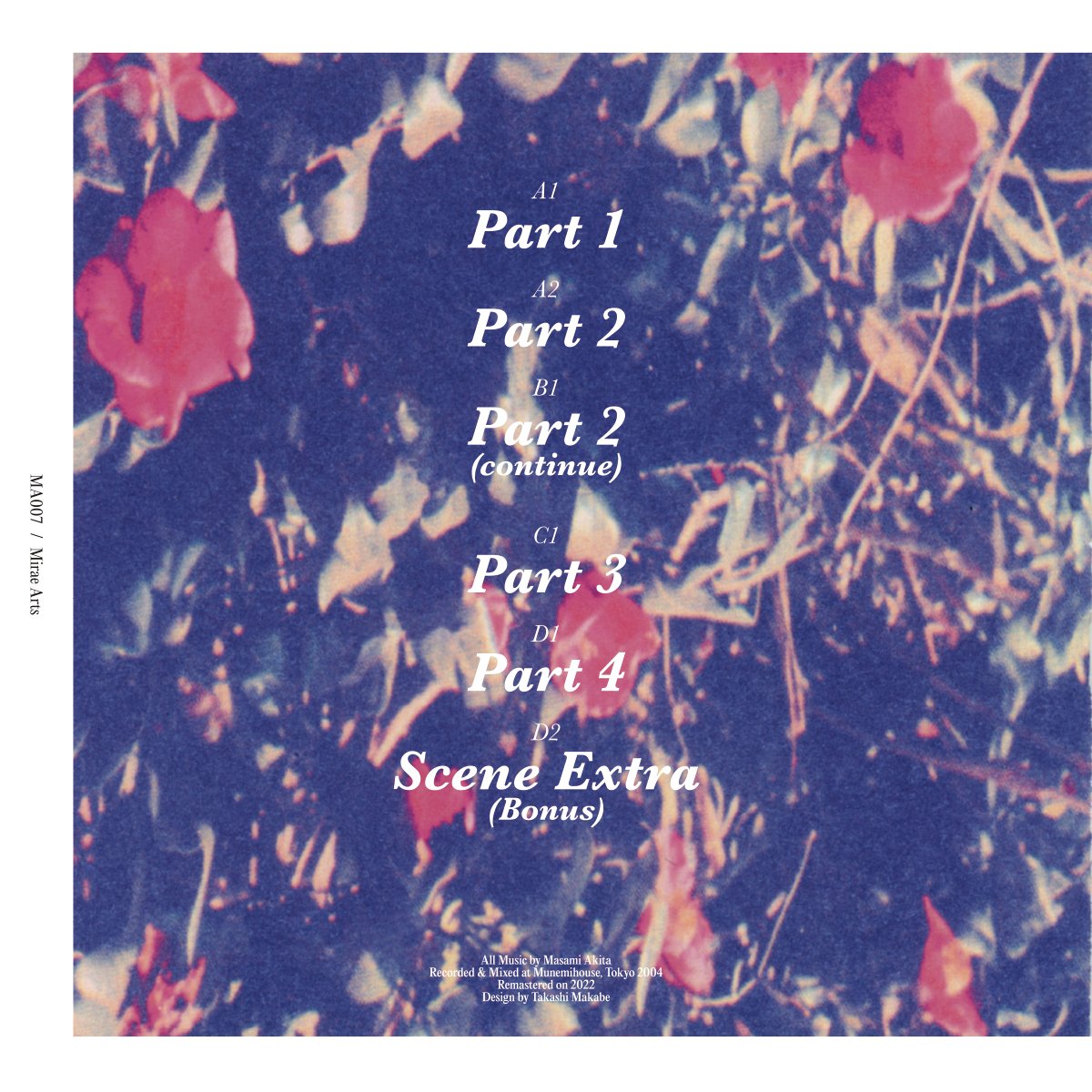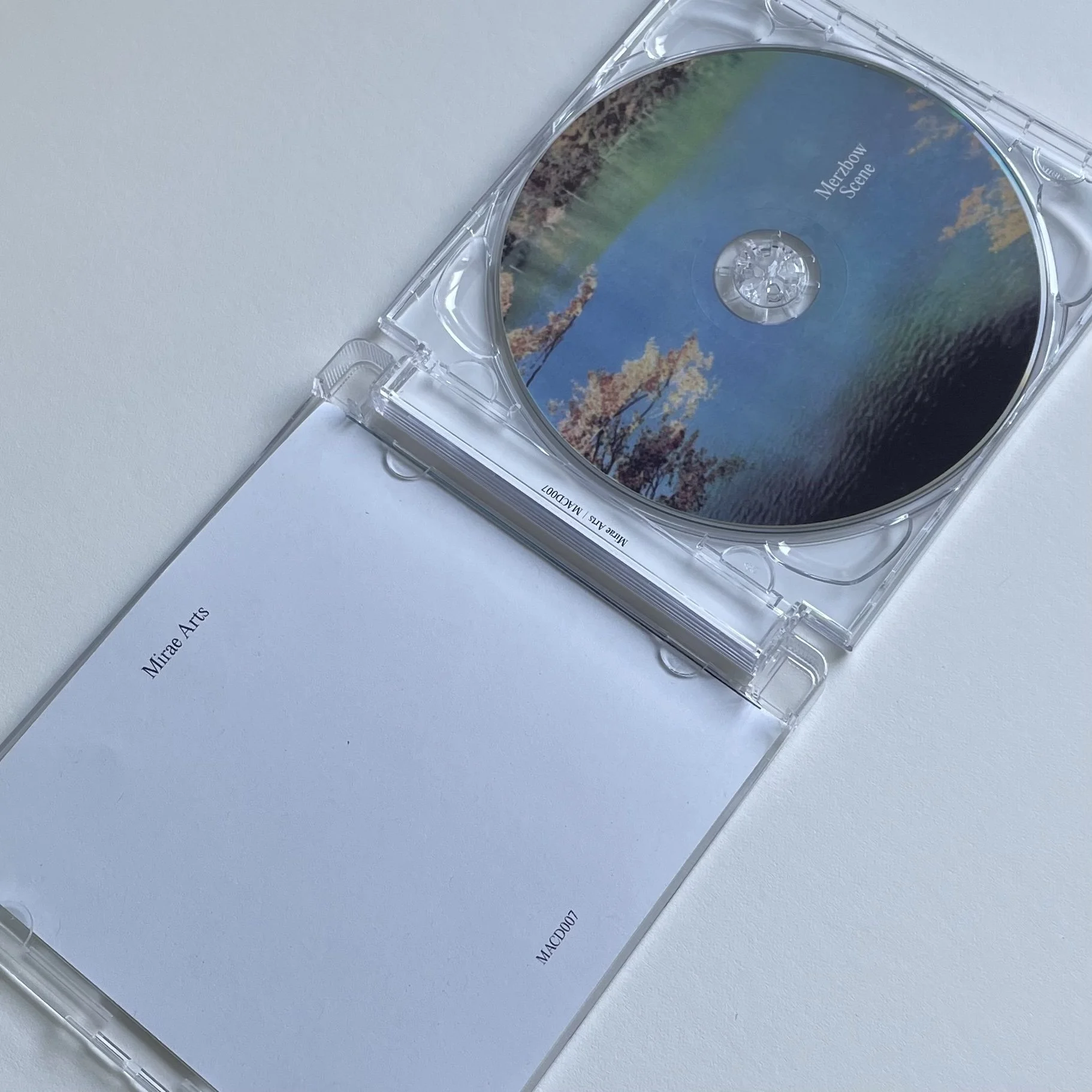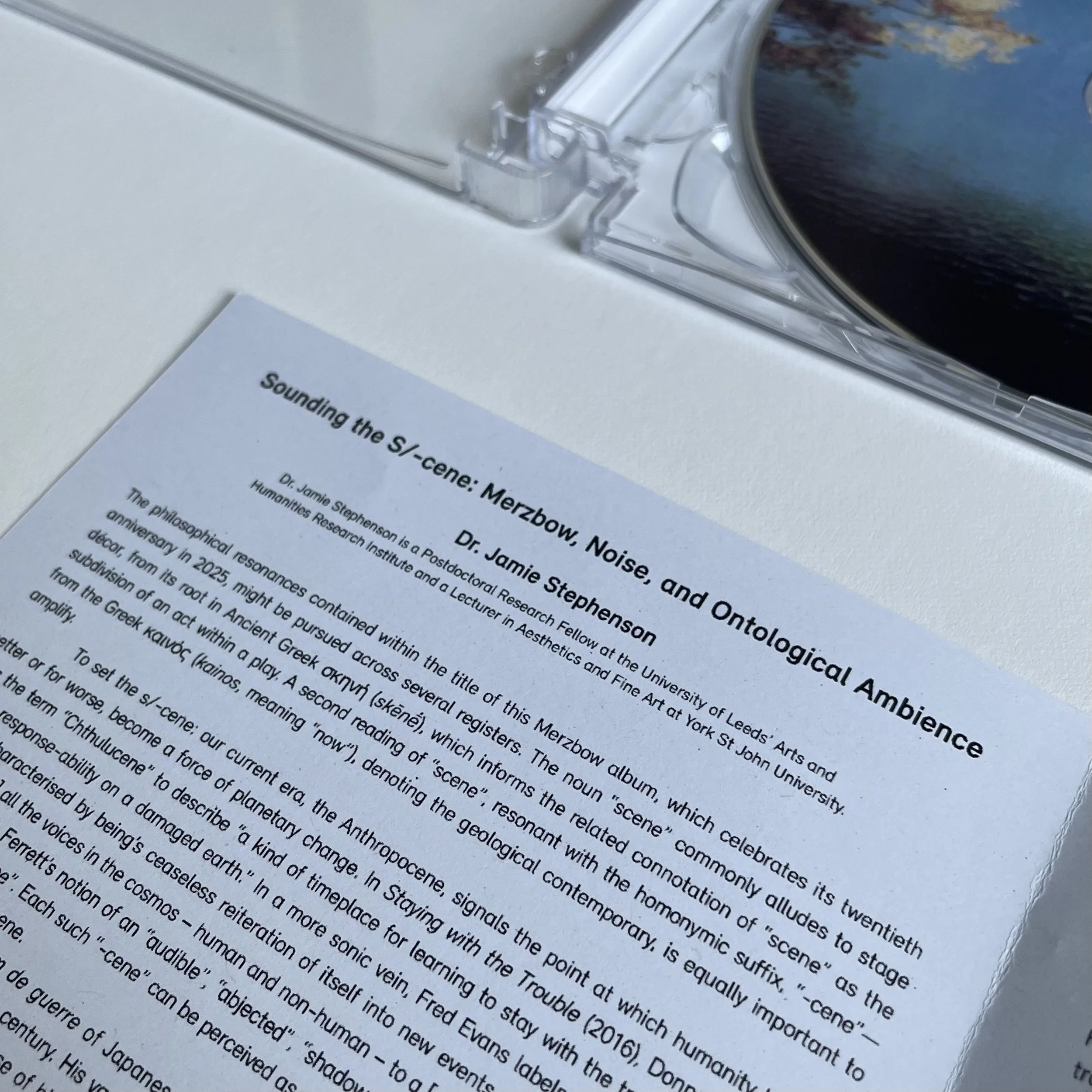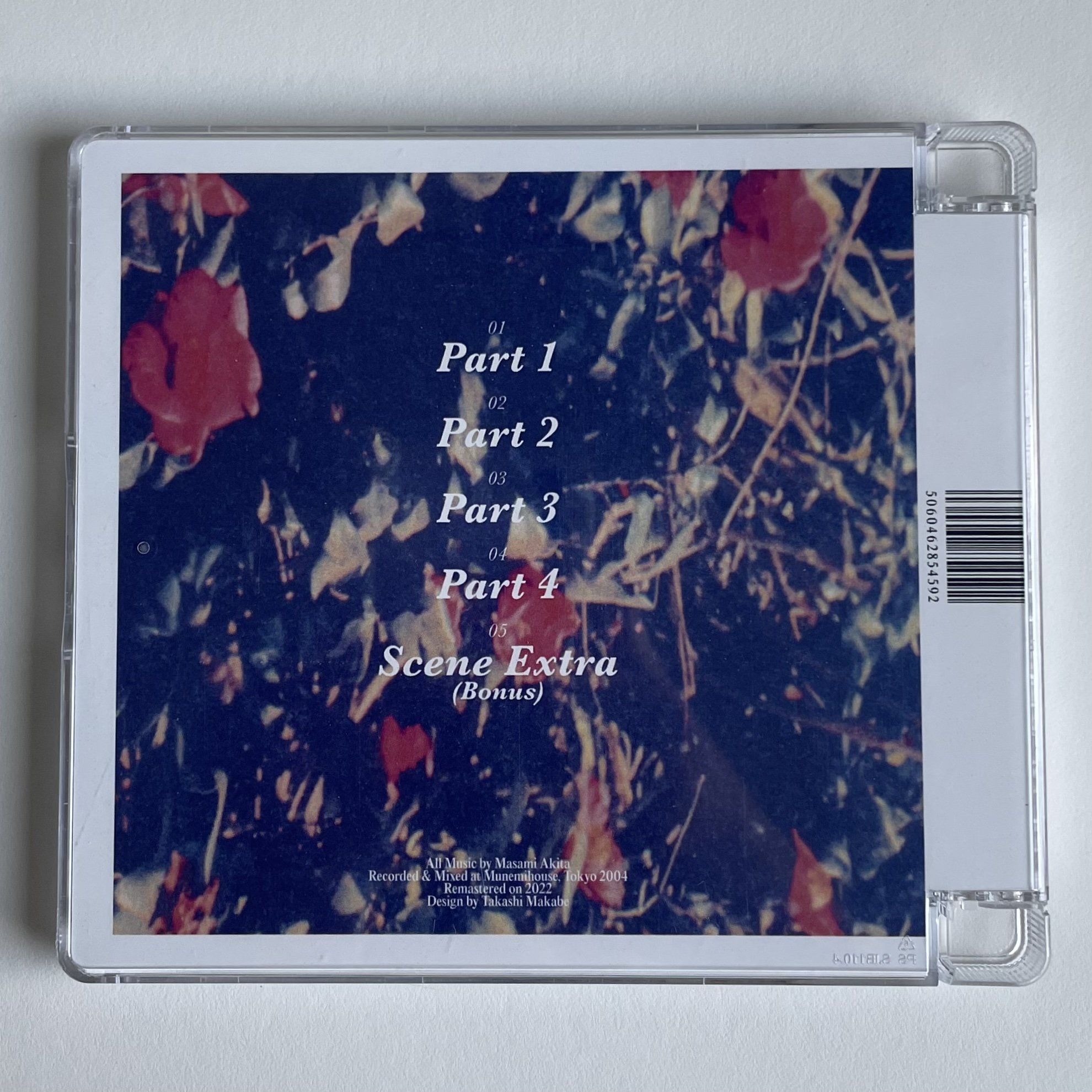Merzbow - scene
Merzbow (Masami Akita), the seminal Japanese noise project since 1979, remains one of the most influential and prolific figures in modern electronic composition.
Originally a limited CD-only release on Waystyx in 2005, ‘Scene’ is now available on vinyl for the first time with remastering by Masami Akita and an exclusive bonus track from the original recording session.
Scene is revered by fans as one of Merzbow’s best surrealist works from the mid-2000s ‘laptop era’. The intro track, Part 1, immediately grabs listeners with hysteric carnival music. The ascending parts then warp into hallucinatory passages with rhythmic drum patterns, metalworks, echoing bird calls, and eerie wind chimes tinkling atonally in the gossamer moon.
Ultimately, Scene is a vital part of Merzbow’s ever-evolving experimentations with analog and digital manipulations. Limited to 300 copies, the long unavailable Scene is officially back in our hands.
Listen: https://miraearts.bandcamp.com/album/scene
All Music by Masami Akita
Recorded & Mixed at Munemihouse, Tokyo 2004
Remastered by Masami Akita on 2022
Vinyl Mastering & Lacquer by Kassian Troyer
Artwork by Masami Akita
Design by Takashi Makabe
Wood Print by Mei Wang
Format - Vinyl and Digital
Tracklist:
Side A
1. Part 1
2. Part 2
Side B
1. Part 2 (continue)
Side C
1. Part 3
Side D
1. Part 4
2. Scene Extra (Bonus)
MA007
Sounding the S/-cene: Merzbow, Noise, and Ontological Ambience
Essay by: Dr. Jamie Stephenson for the 20th Anniversary CD reissue (July, 2025) (MACD007)
Biography: Dr. Jamie Stephenson is a Postdoctoral Research Fellow at the University of Leeds’ Arts and Humanities Research Institute and a Lecturer in Aesthetics and Fine Art at York St John University.
—
The philosophical resonances contained within the title of this Merzbow album, which celebrates its twentieth anniversary in 2025, might be pursued across several registers. The noun “scene” commonly alludes to stage décor, from its root in Ancient Greek σκηνή (skēnḗ), which informs the related connotation of “scene” as the subdivision of an act within a play. A second reading of “scene”, resonant with the homonymic suffix, “-cene”—from the Greek καινός (kainos, meaning “now”), denoting the geological contemporary, is equally important to amplify.
To set the s/-cene: our current era, the Anthropocene, signals the point at which humanity has, for better or for worse, become a force of planetary change. In Staying with the Trouble (2016), Donna J. Haraway coins the term “Chthulucene” to describe “a kind of timeplace for learning to stay with the trouble of living and dying in response-ability on a damaged earth.” In a more sonic vein, Fred Evans labels our epoch the “Chaosmocene”, characterised by being’s ceaseless reiteration of itself into new events, a “-cene” which calls for an “opening up [of] all the voices in the cosmos – human and non-human – to a […] form of mutual audibility” (2023). Resonant, too, is D. Ferrett’s notion of an “audible”, “abjected”, “shadow cene to that of the Anthropocene”, what she calls an “Occultcene”. Each such “-cene” can be perceived as a response to the existential fatigue associated with living in the Anthropocene.
Merzbow—the nom de guerre of Japanese noise artist, Masami Akita—has been wrestling with raw sound now for almost half a century. His vast catalogue can be divided and subdivided into several of its own scenes, from the analogue phase of his first twenty years, to the later digital experiments of his “laptop” era; the self-styled “porn noise” of his early Eighties’ cassette output (1981), or the environmental-themed, analogue-percussive 13 Japanese Birds series (Important Records, 2009-2010). This discourse of subdivisions and periods speaks to the millennia-old philosophical dilemma of the nature of reality. In such narratives, modalities of being are often categorised as a series of reductive oppositions, e.g., being-becoming; relations-relata; static-dynamic. In contrast to this, we might promote ontological “ambience”, in tandem with a hermeneutic methodology of “auditioning” (a mode of understanding/articulating the world through sonorous tropes, e.g., resonance, touch, reciprocity), to evoke the liminal “inbetween”, where such binaries touch/intersect.
Merzbow’s art in general, and Scene in particular, lend themselves to this call for nonbinary ontologies. For example, Akita’s sound practice can be said to invoke several tropes associated with the Japanese Buddhist tradition, including apophatic doctrines of negation, absence, or silence; and the dissolution, or non-existence of the self, as jakujou (寂静, nirvana). In turn, these tenets resonate with ideas from Kyoto School thinkers, like Nishida Kitarō’s non-dualistic “Basho” (場所) (1926), or the “Absolute Nothingness” of Tanabe Hajime’s “metanoetics” (1945). The extreme minimal-maximal tensions in Merzbow’s sonic aesthetics are consonant with ego-dissolving jakujou, aiding a more intimate engagement with Buddhist transformative practice, East-Asian philosophy (e.g., Nishida, Tanabe), and their dealings with nonconceptual reality beyond language and ideas.
Themes of the “nonconceptual” which are “beyond language” gesture toward the same democratisation of ontological status called for by Haraway, Evans, and Ferrett, to name just three. Amplifying being’s radical reciprocity—or, to paraphrase Evans, its “inter-cosmic communication”—through a sonorous aesthetics of noise has the potential means to ontologically de-hierarchise the anthropocentrism of late capitalism. Consider Scene’s “scene”: Akita’s cover art offers a gauzy representation of a snow-covered mountain (perhaps Mount Fuji). To the right of the image the branch of what might be a Japanese white birch or Gingko tree casts several of its leaves adrift on the breeze. Or are they floating on the surface of a body of water? Is the entire scene actually a reflection? This hypnagogic interpolation is recapitulated in the music of Scene: rhythmic percussive intervals mix with panning birdsong, wind chimes blend with screaming sonic data.
Akita’s cover vaguely resembles Caspar David Friedrich’s painting Wanderer above the Sea of Fog (1817), a stalwart in discourses concerning nineteenth century aesthetics of the sublime. In Friedrich’s original, a male figure is foregrounded on a stony outcrop, standing with his back to us, taking in nature’s epic panorama. Rabid sea waves crash upon rocks, separating him from a distant mountainous horizon. The sublime is mediated through the human sensorium. Speculating on the cover of Scene as a twenty-first century expression of sublimity, it is important to note that the human is absent. As one of Japan’s sacred mountains, Mount Fuji is believed to have volcanic power: a plate tectonic analogue of the sounds contained in Scene? The lack of humanity’s presence speaks to postmillennial philosophical critiques of human exceptionalism, as heard in Haraway, Evans, and Ferrett.
S/cenes are not simply discrete periods, or entangled relations, they are also the ambience between such modes. They behave as what Jean-Luc Nancy calls a “continuous-discontinuity”. In Listening (2002), Nancy writes that the “sonorous [is] tendentially methexic (that is, having to do with participation, sharing, or contagion)”. Reprising the theatrical connotations of “scene”, the Ancient Greek term μέθεξις [methexis] pertains to “participation” or “group-sharing”, describing the communal nature of classical dramatic performance. In a philosophical setting, too, methexis applies to the relation between a particular (the concrete) and a form (the abstract). Given this communality, this relational tenor, rather than contained and exclusive, being would seem to be methexical too.
In posthumanist terms, the absence of the human from the cover of Scene is interesting. The digital element of Scene’s composition, speaks to a tension between the “manmade” (yet somewhat self-playing) technology of its manufacture and its non-anthropocentric cover art, to its employment of natural and fabricated sound. Writing in Genesis (1982), Michel Serres offers a conceptual metaphor of noise as “the ground of our being […] limitless, continuous, unending.” Yet there is also ontological capacity within Serresian noise to articulate the holistic ambience of reality—in and through which all entities are expressively communicative—as a creative exchange, in line with Evans’ “inter-cosmic communication”. In Beyond Unwanted Sound (2017), Marie Thompson harnesses these productive capacities of noise to articulate the other- or more-than-human registers of existence. “[T]o exist is to be affected by noise”, she writes; noise is “non-anthropocentric: it does not treat the human as an ideal”. The noise of Merzbow and Scene sound out the progressive democratic, communal, and aesthetic dimensions within this ontological ambience.
References
Barnhart, Robert K., (ed.), Chambers Dictionary of Etymology (London: John Murray Press, 2011)
Evans, Fred, “Deleuzian Cosmopolitanism: From the Capitalist Axiomatic to the ‘Chaosmocene’”, in Symbiotic Posthumanist Ecologies in Western Literature, Philosophy and Art: Towards Theory and Practice, ed. by Peggy Karpouzou and Nikoleta Zampaki (Berlin, Bern, etc.: Peter Lang), pp. 227-243.
Ferrett, D., “Witching Sound in the Anthropocene (the Occultcene)”, in The Witch Studies Reader, ed. by Soma Chaudhuri and Jane Ward (Durham: Duke University Press, 2025), pp. 262-274.
Gadamer, Hans-Georg, “Plato as portraitist”, trans. by Jamey Findling and Snezhina Gabova, in Continental Philosophy Review, No. 33, (2000), pp. 245-274.
Haraway, Donna J., Staying with the Trouble: Making Kin in the Chthulucene (Durham and London: Duke University Press, 2016)
Nancy, Jean-Luc, “The Heart of Things”, trans. by Brian Holmes and Rodney Trumble, in The Birth to Presence (California: Stanford University Press, 1993), pp. 167-188.
-----., Listening, trans. by Charlotte Mandell, (New York: Fordham University Press, 2007, orig. 2002)
Serres, Michel, Genesis, trans. by Geneviève James and James Nielson (Ann Arbor: The University of Michigan Press, 1995, orig. 1982)
Stephenson, Jamie, “Hermeneutics of ‘Auditioning’: Contemporising Tensions between ‘Modernity’ and ‘Modernism’ through a Poetics of Resonance”, in Caietele Echinox, Volume 47, 2024, pp. 17-31.
Thompson, Marie, Beyond Unwanted Sound: Noise, Affect and Aesthetic Moralism (New York and London: Bloomsbury, 2017)






